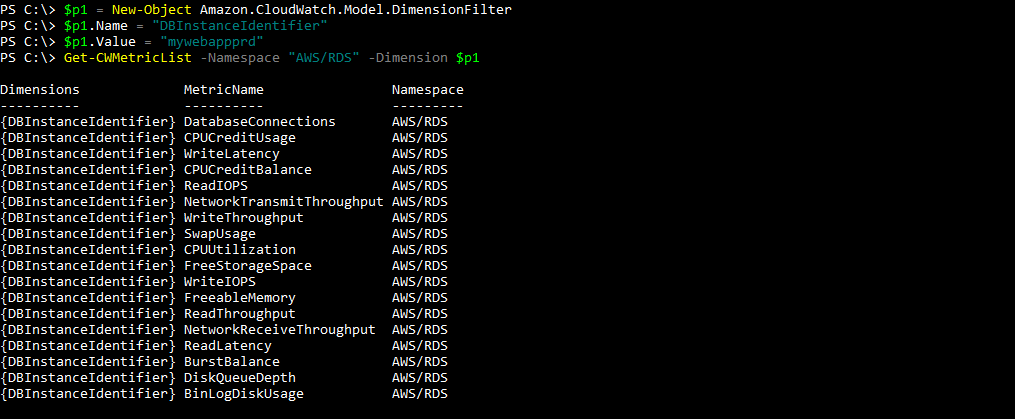By default, RDS provides you with some default metrics that you can use to monitor the RDS instances. RDS provides metrics for the following items:
- The number of connections to a DB instance
- The amount of read and write operations to a DB instance
- The amount of storage that a DB instance is currently utilizing
- The amount of memory and CPU being utilized for a DB instance
- The amount of network traffic to and from a DB instance
To get a list of the default metrics provided for the specific DB instance mywebappprd, you can use the following command:
PS C:\> $p1 = New-Object Amazon.CloudWatch.Model.DimensionFilter
PS C:\> $p1.Name = "DBInstanceIdentifier"
PS C:\> $p1.Value = "mywebappprd"
PS C:\> Get-CWMetricList -Namespace "AWS/RDS" -Dimension $p1

Note that the namespace name for RDS is AWS/RDS, which you use...



